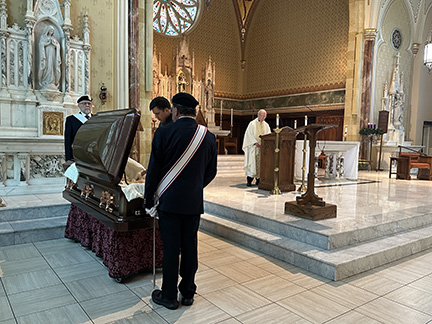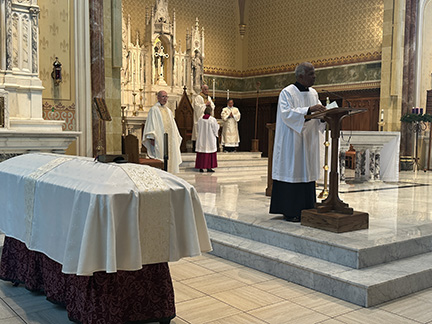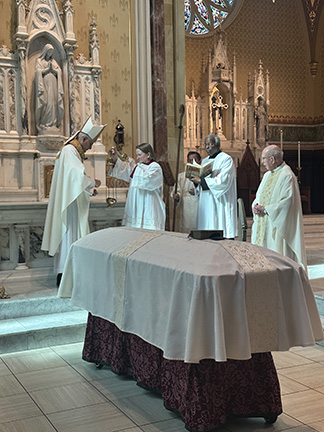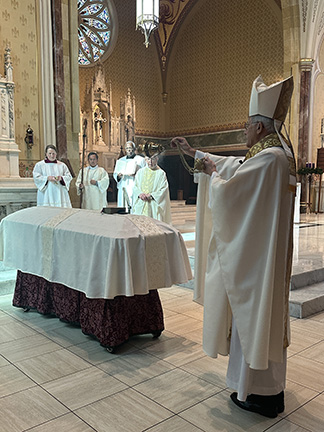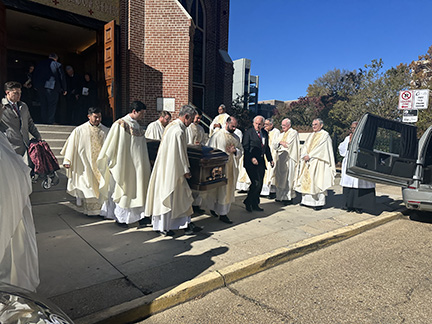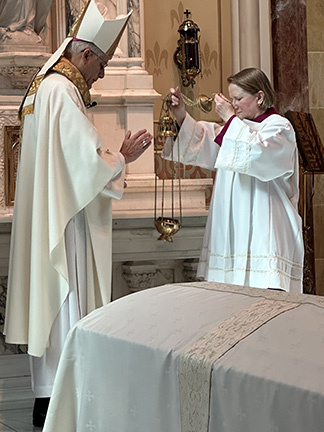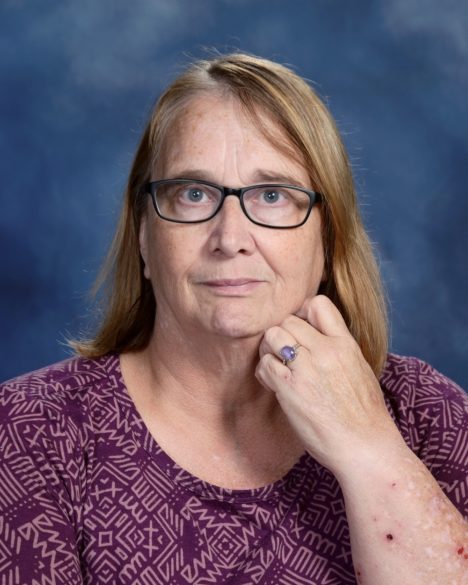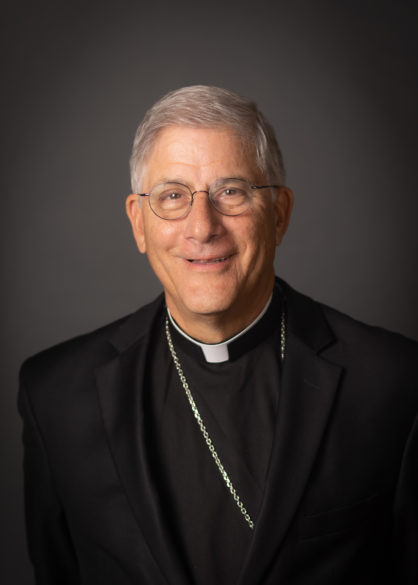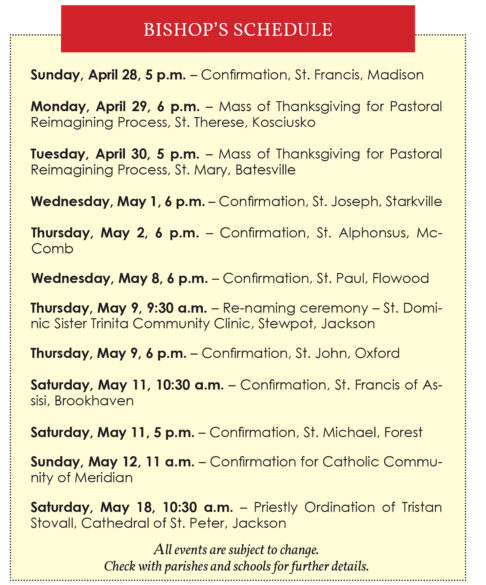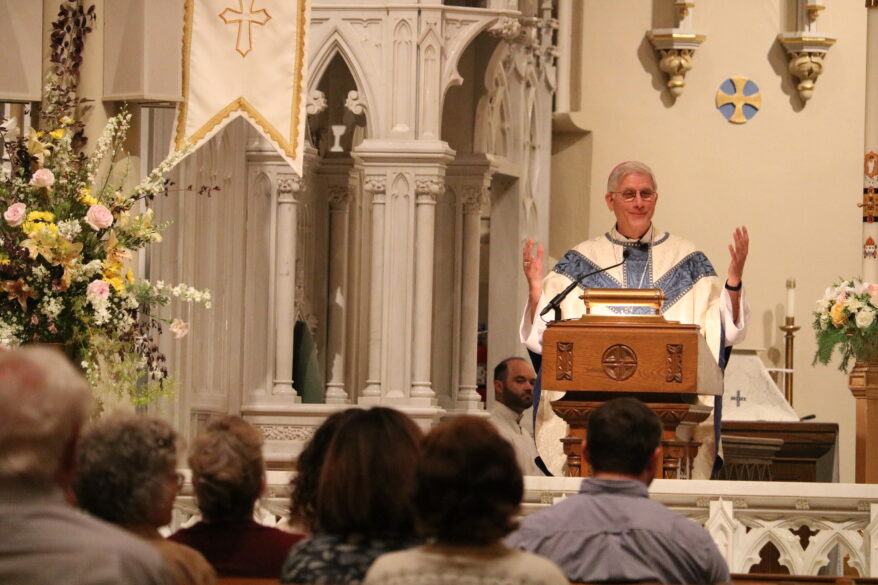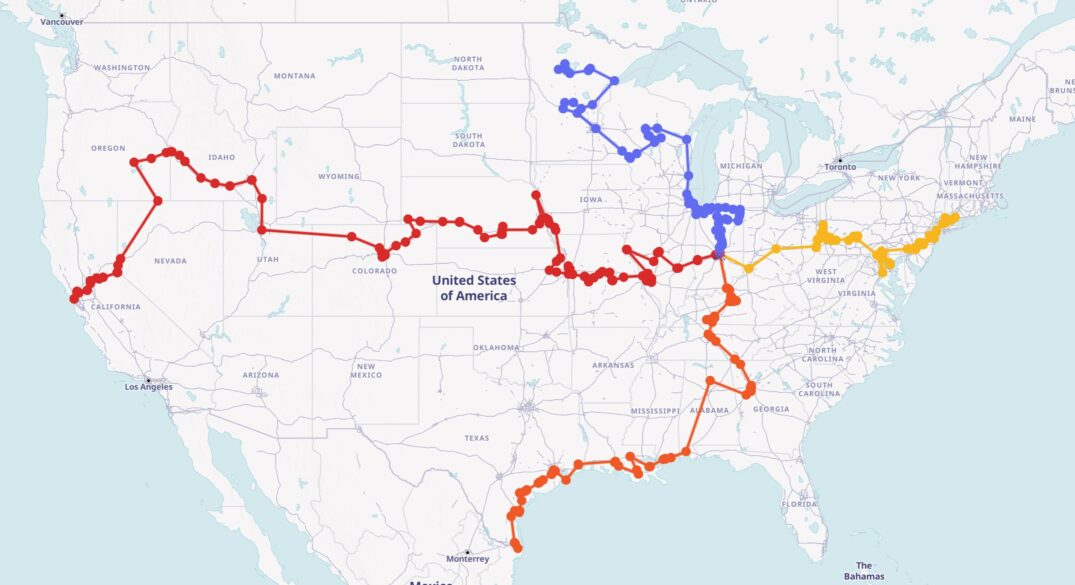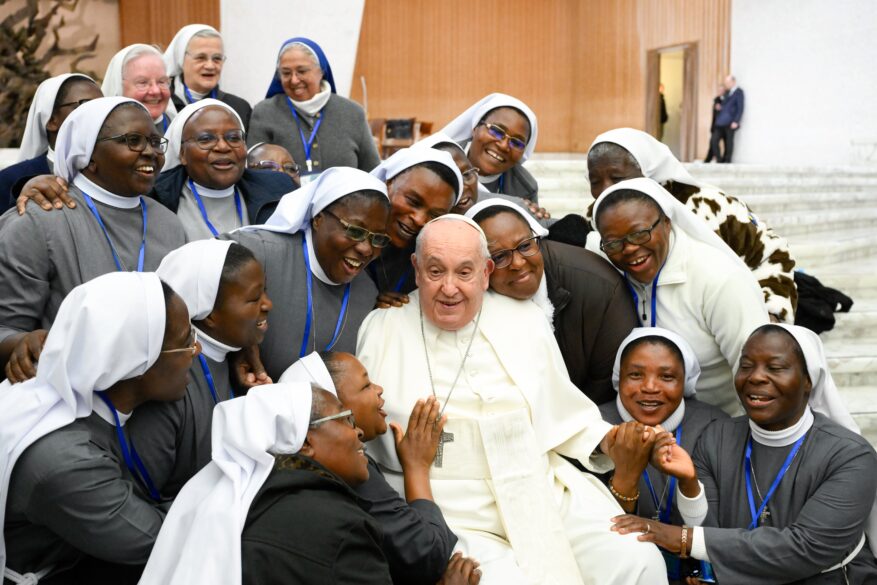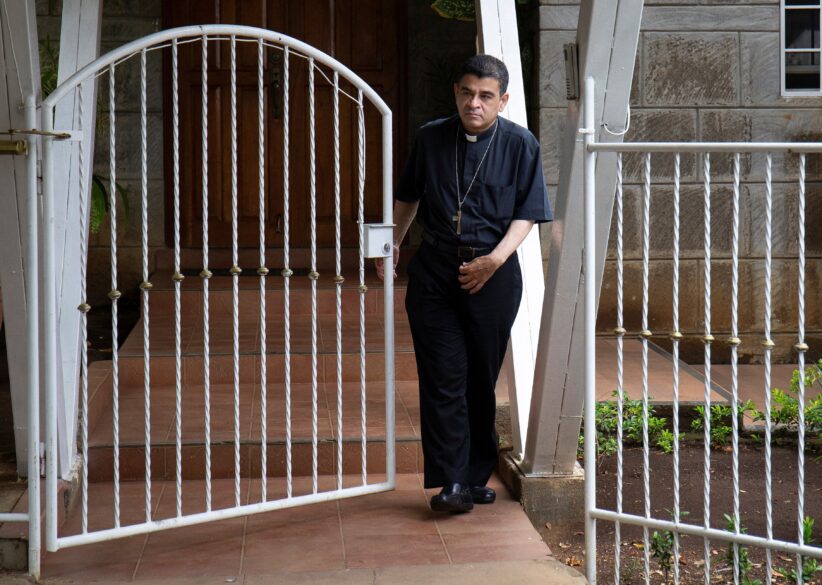By David Agren
(OSV News) – Cardinal Jorge Mario Bergoglio of Buenos Aires made history with his election on March 13, 2013, becoming the first Argentine and first Latin American to become pope.
As Pope Francis died in the Vatican April 21 at 88, it was in his Archdiocese of Buenos Aires, where now-Archbishop Jorge García Cuerva remembered him as “the pope for all” and the “the pope of the poor.” The archbishop also remembered him as the pope for all Argentines and exhorted the country to remember their late countryman as a figure of unity in a divided nation.
“Now we’ll have to be a little bit like Francis and also be more merciful to one another. I think the best tribute we Argentines can pay to Francis is to unite. The best tribute we can pay him is to build bridges, to engage in dialogue, to stop constantly confronting each other,” Archbishop García Cuerva said at a Mass celebrated at the Metropolitan Cathedral in Buenos Aires for Pope Francis.
“What greater pain for a father is there than to see his children divided. May Francis go to heaven with the peace of mind that his children will try to live the national unity between us that is still pending.”
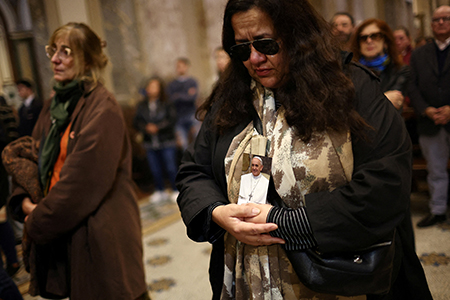
The Argentine bishops conference added in an April 21 statement, “We thank God for the life, ministry and testimony of faith of someone who knew how to guide the universal Church with humility, evangelical firmness and unconditional love for the poor, the discarded and those who suffer.”
The Argentine pope of the people
While his election sparked outpourings of pride, patriotism and hope for reconciliation in a politically divided country – his legacy in his homeland is a complicated one. Few photos of Pope Francis are spotted in Buenos Aires, the Argentine capital, unlike soccer stars Diego Maradona and Leonel Messi, who led their country to World Cup success.
Observers credit the pope’s modest stature in his homeland to politics – with politicians from all sides trying to portray him as a fellow traveler or, in the case of current President Javier Milei, badmouthing the pope for his teachings. The pope’s comments were often scrutinized as much for political sentiments as anything pastoral.
Many Argentines seemingly continued seeing the pope as Cardinal Bergoglio, a figure focused on local matters rather than the leader of the universal church.
“We Argentines have not allowed Bergoglio to be Francis,” Archbishop García Cuerva said at a Feb. 24 Mass, where Argentines prayed for the then-hospitalized pope. “We have always put him in the middle of our sterile discussions, we have put him in our political divides.”
Attendees clutched photos of Pope Francis, wore Argentina’s familiar colors of sky blue and white and carried images of Our Lady of Luján, the national patroness.
“He confirmed me,” said Felipa Acosta, a parishioner at the Our Lady of Caacupé, named for the patroness of Paraguay. Acosta recalled Pope Francis visiting the parish in one of the many villas (shantytowns) in Buenos Aires – places avoided by polite society.
“He was always very close to us,” said Claudia Tejada, who remembers the future pope visiting her parish monthly. She recalled him sipping yerba mate, a popular infusion, and chatting with parishioners.
But there was no avoiding the complicated relationship between the pope and his native country — something Archbishop García Cuerva addressed in comments alluding to Argentine attitudes and those of Catholics further afield.
“We have tried to teach him, almost in a daring way, what it meant to be pope as if we had the manual for that,” Archbishop García Cuerva said in February.
“Yet he loves us, and yet he has us in his heart. He did what a loving father does. That is Francisco, the father of all, but we know that in his heart there is a lot of Argentine and a lot of porteño,” he said of Pope Francis, using a common and affectionate nickname for natives of Buenos Aires.
A complicated legacy
Pope Francis was born in Buenos Aires and raised in the middle-class Flores neighborhood. He served as Jesuit provincial – though his term ended in acrimony, according to observers – and was named auxiliary bishop of Buenos Aires in 1992. He was raised to archbishop in 1998 and cardinal in 2001.
As archbishop of Buenos Aires, Pope Francis was known for his grassroots ministry and confrontations with Argentina’s political elite – particularly with the late President Néstor Kirchner and his wife, former President Cristina Fernández de Kirchner, over their Peronist politics. Though initially icy, Fernández de Kirchner later warmed to Francis, visiting him in Rome multiple times. Still, his papacy has often been entangled in Argentina’s political tensions, with his expressions — or silences — scrutinized by leaders across the spectrum.
So-called “friends of Francis” also started appearing, along with supposed spokesmen with messages after trips to Rome. This forced the Argentine bishops’ conference to ask people to desist, saying the practice “has generated confusion and justified regrettable distortions of his figure and his words.”
Criticisms also emerged about the pope not visiting Argentina. He visited some countries of South America during his pontificate and twice flew over Argentine territory en route to Paraguay and Chile. He often spoke of visiting, but never did.
“If Francis were to come to Argentina, it would be assumed that he would be used politically in favor of the government in power or against the government in power,” De Vedia said. “I think that he would have had great popular fervour in the streets” had he visited “and at the same time debates about his positions,” Marianon De Vedia, editor for Argentina’s La Nacion said.
A changing nation
Argentina continued its drift away from Catholicism after Francis’ election. Some 62.9% of Argentines identified as Catholic in a 2019 survey from research institution CONICET, down from 76.5% in 2008. The number of people identifying as non-religious reached 18.9%, outpacing the growth in Protestant and other congregations.
Abortion was decriminalized in 2020 as a feminist movement became influential. Argentina’s bishops bitterly opposed abortion decriminalization, especially as it came during a pandemic in which the church – especially priests in the shanties, known as “curas villeros” – worked to feed and care for populations thrown into economic hardship.
Pope Francis paid special attention to the “villas” at a time when few others would enter the shantytowns, supporting their work serving communities rife with poverty and addictions.
“We felt really close (to him) and that he has acted like a bishop who is present and also seeks to solve the problems,” said Father José María di Paola, a prominent cura villero known as Padre Pepe.
The curas villeros promoted the pope’s vision of going to the peripheries. They took special offense at the rise of President Milei, who once branded the pope a “filthy leftist.” The curas villeros celebrated a Mass of reparation in a shantytown after Milei’s comments.
Milei took office in 2023 on an agenda of slashing the government. Pope Francis was quick to congratulate him. Milei traveled to the Vatican for a visit and asked the pope to visit.
On April 21 Milei said: “Despite our differences, experiencing his kindness was a true honor.”
The president’s office had formally communicated the news saying that the pope led the Catholic Church “with dedication and love from the Vatican.”
(David Agren writes for OSV News from Buenos Aires.)

